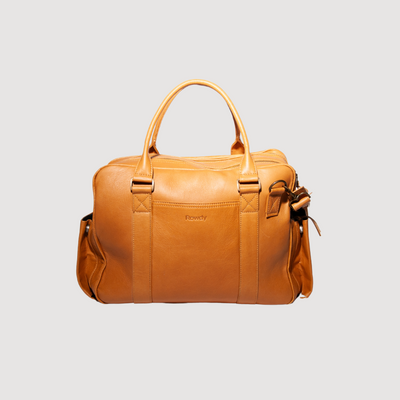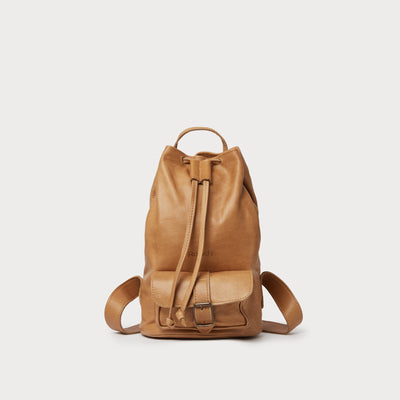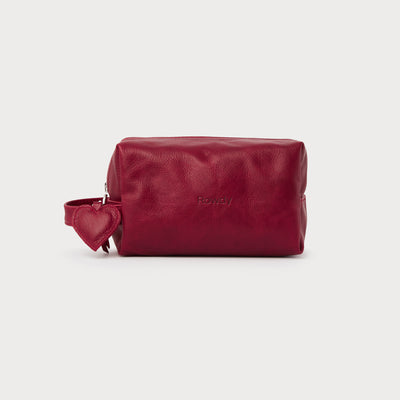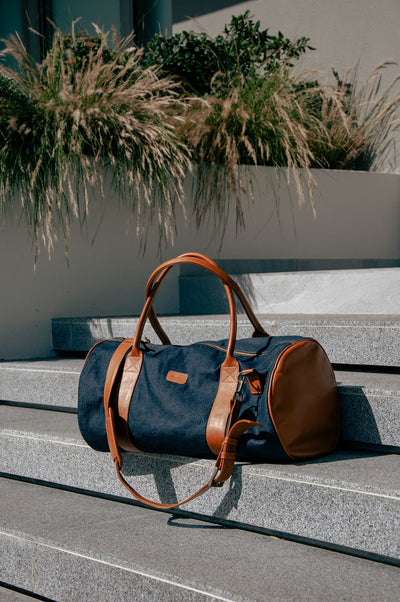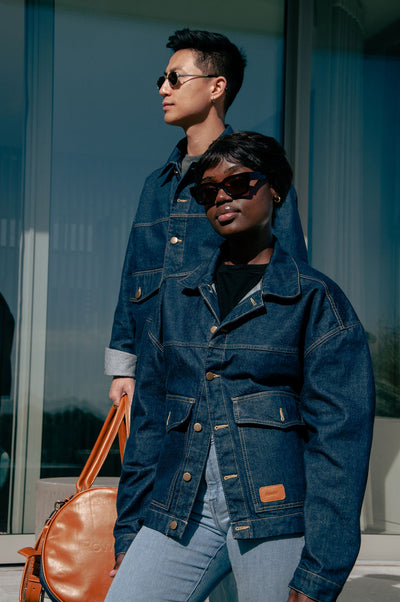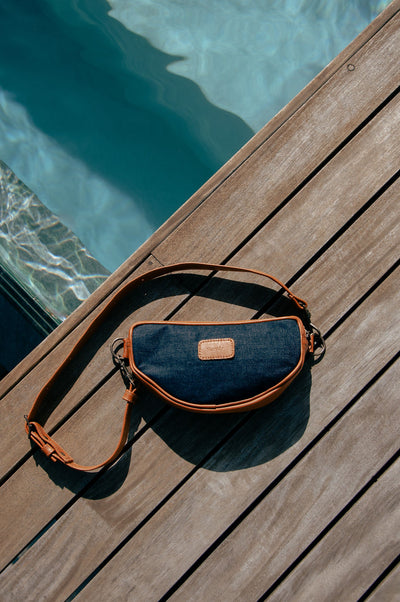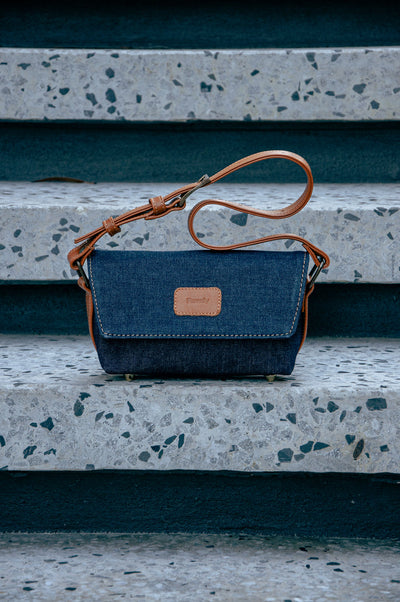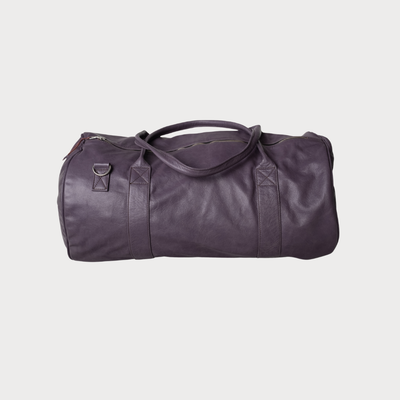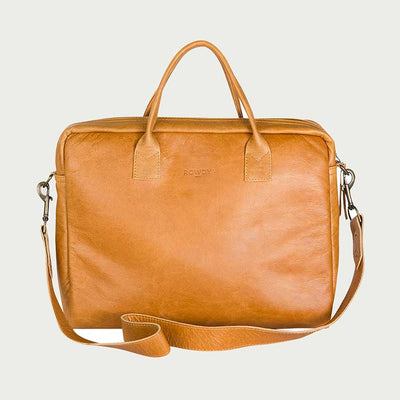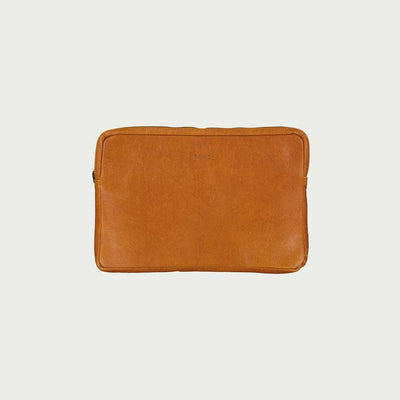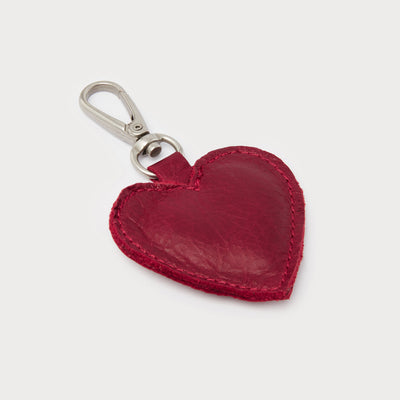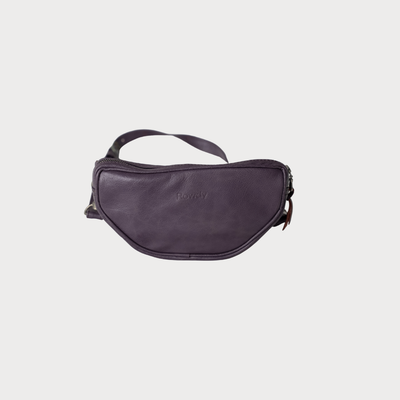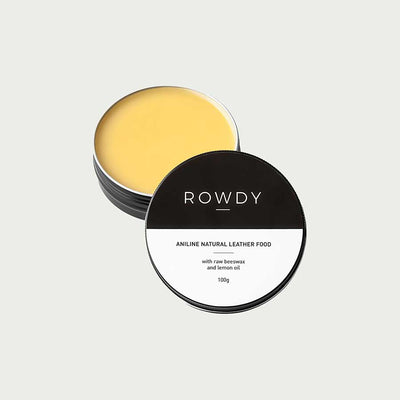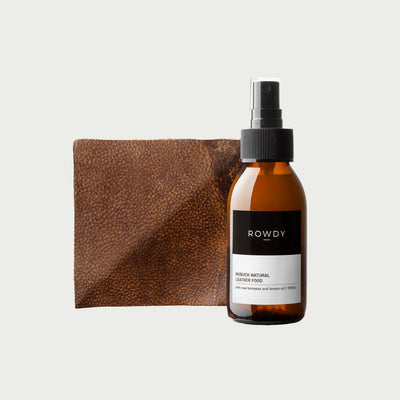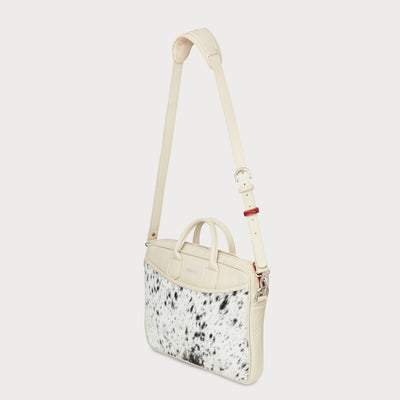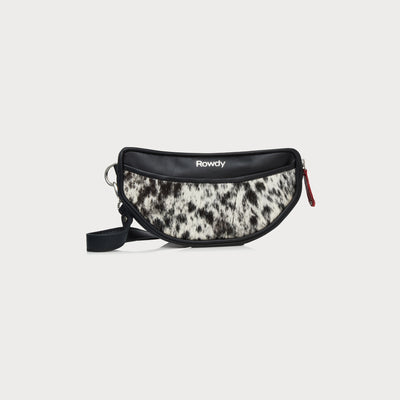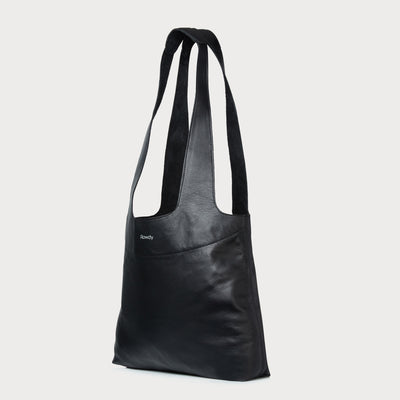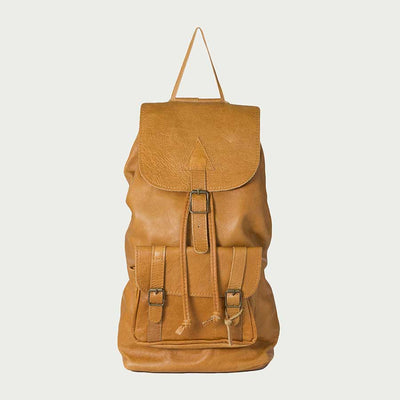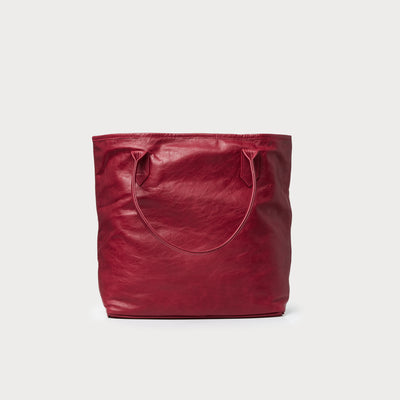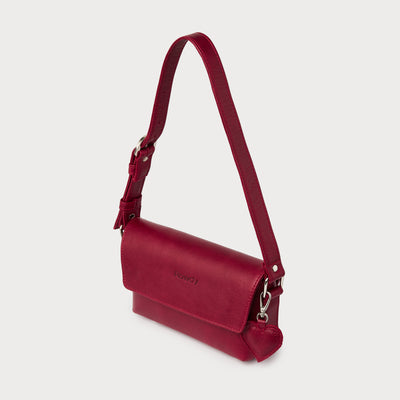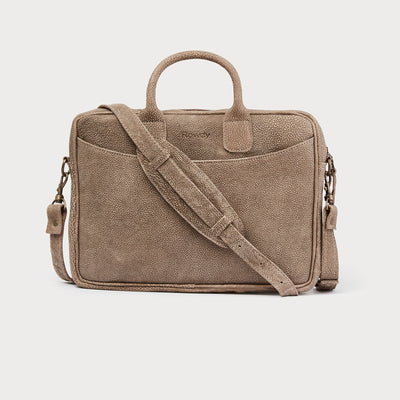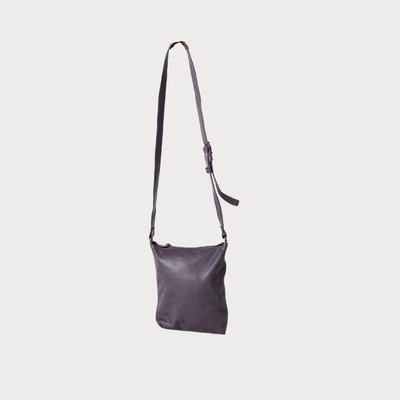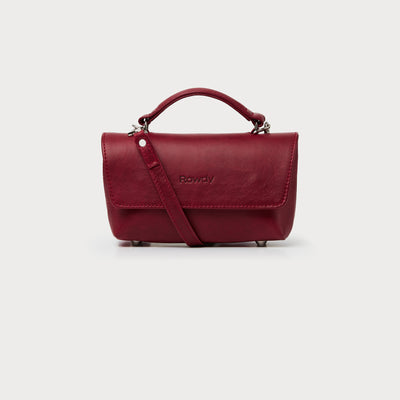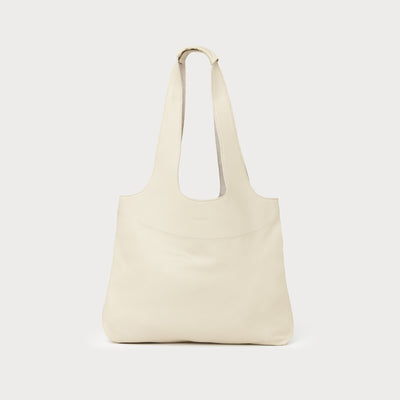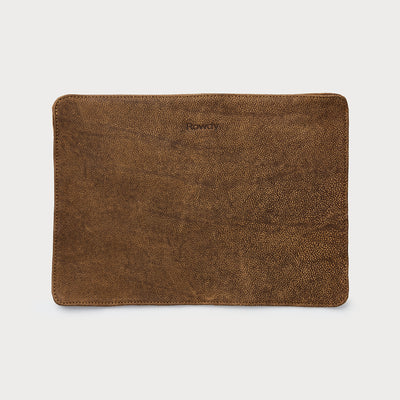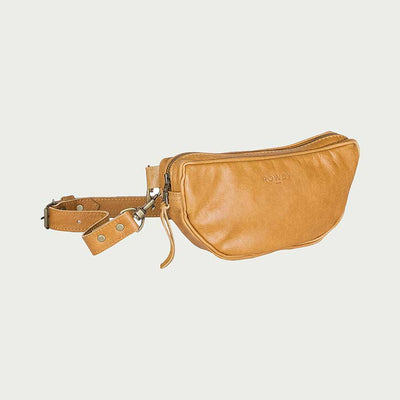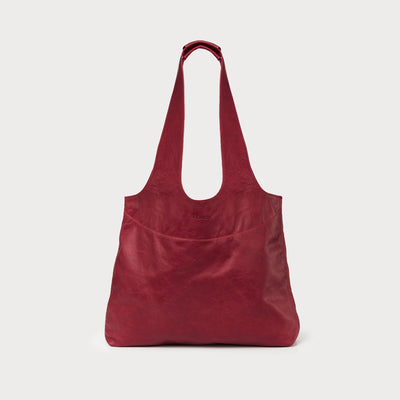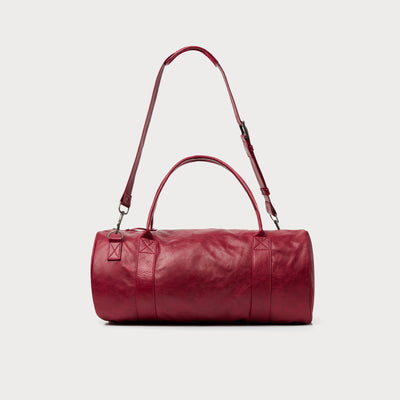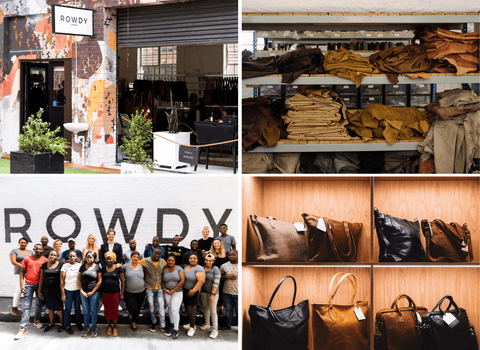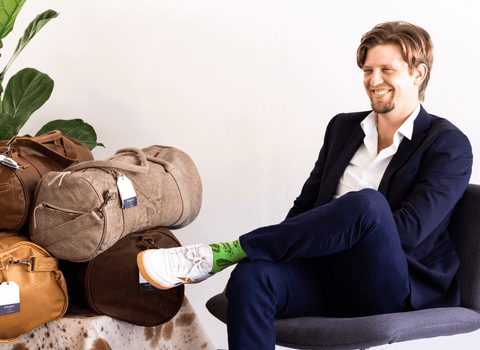Leather making is an ancient art that has been practised for over 7000 years. Back then, creating a hide was a matter of leaving a skin in the sun to dry. With time, this process evolved into a machine-driven industrial craft that requires an intricate series of steps to achieve the buttery soft hide you’ve come to associate with ROWDY Bags. While time may have introduced scalability and safety measures, the modern-day process is still extremely hands-on and honours the ultra-artisanal skill required to create a material that can last for decades.
At ROWDY, we maintain a trusted, long-term relationship with our leather supplier. While we won’t be naming them as we can’t give away our trade secrets, we’re proud to share that our supplier is one of the few African tanneries that work with leather from procurement of raw skins to finishing. This means they have a hand in every step of the production process - just like we do at ROWDY. For the talented leather machinists in our factory each bag is a labour of artisanal proficiency. Each ROWDY takes anywhere from 30 minutes on our smaller items up to 3 hours on our larger, more complicated carry-items such as a rucksack! Following an inspiring visit to their factory, we thought we’d share the story of how our leather is made and why we choose to work with the hides we do.
Why ROWDY, why leather?
For thousands of years, humans' relationship with cattle has proven to be many things: necessary, symbolic, harmonious, contested, but above all, epic and invaluable.
The skin used to make leather comes from animals raised for their meat (particularly the leather we source). As a by-product of the meat industry, many environmental activists argue that as long as there's a meat industry, not having a leather industry would actually be wasteful, as the hides would waste away in dumps rather than being made into a long-lasting material.
Since our inception in 2012, all ROWDY Bags are made using African bovine leather. We choose to work with leather as it is biodegradable, doesn’t return to the Earth as poison and offers longevity that plastic alternatives (that includes vegan leather at this stage) do not. This said, we recognize future demands may shift and our priority will always be to make bags that last, rather than bags out of leather. For the time being, we really do want your carry-items to last beyond the season.
Choose Free-Range, Bushveld Leather
Do you know what kind of leather you are buying? In Southern Africa, there are three key categories: Grassland, Bush Veld, Thorny Bush Veld and Corrected Grain. At ROWDY, we’ve committed to buying a category of leather called ‘Bushveld’. To us it is the best. Why? It means the cow was reared free-range in the bushveld. This means it had room to roam - so much so that often the hides have marks from thorns, tick bites, bushes, bull horns and general life. While there are other categories such as feedlot cows that provide unmarked leather (due to the cramped living conditions during the animal’s life), the reality is that we specifically opt for leather that comes from cows that lived a free life in the open plains.
We view these imperfections as perfect, as the leather hides are real, beautiful and full of character. They showcase the life of the animal and pay homage to it. To us, it’s the essence of what the material is all about! While we keep to strict quality standards ensuring every bag retains quality, the varying levels of natural irregularities are an inherent feature and natural beauty of the hide. Each bag is a story sealed in time, creating a 100% unique piece. After all, ROWDY loves celebrating individuality, and that starts with our bags.
How Is Leather Made?
If you’ve never set foot in a leather tannery, it is certainly an experience to behold. While there are several steps in the process of taking a raw skin and finishing with a complete leather, we’ve broken down the main steps to encourage a deeper appreciation of what it takes to create this ancient material:
1. Procurement
As a by-product of the meat industry, leather comes from abattoirs, as well as from dealers and local farmers, as it has little other industrial use.
2. Warehousing
Fresh hides and skins are immediately salted after arrival. This process is called curing, much like you would do to meat. This is a very important step that must be done quickly to prevent the hide from spoiling.

3. Liming
In this process, the cured hides are soaked in large rotating drums, that resemble giant washing machines. By adding lime and a specific chemical mix, the water is filtered and residual hair removed. This process greatly improves the effluent and reduces the COD (Chemical Oxygen Demand).
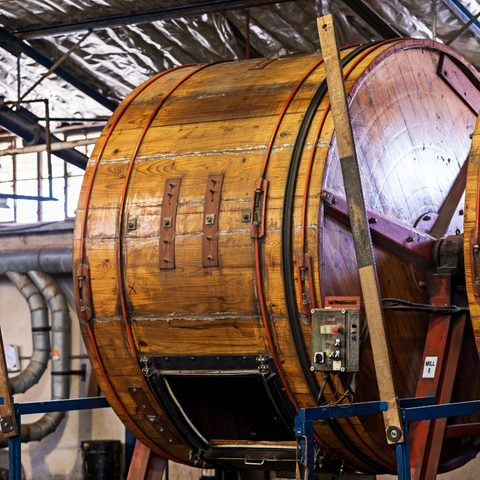
4. Fleshing
Next, the hides go through a special machine to separate the hide from any excess residual fat or flesh, in order to prepare the hide for the tannage stage.
5. Tannage
There are many types of tanning methods. The two most commonly used are chromium tanning and vegetable tanning. Chrome 3 tanning uses a chemical method to tan the hide. This process is very quick and takes about a day to turn skin into leather. At the end of the chrome tannage process, the hides have a blueish look, hence they are known as “wet blue”. Vegetable tanning is a natural process. This technique uses natural plant extracts and takes much longer than chrome tanning.
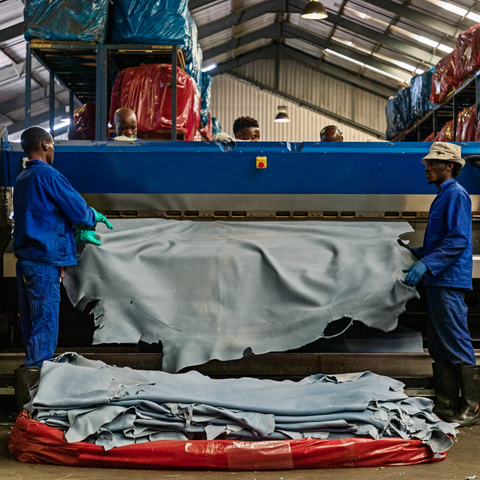
6. Samming
Now, the ‘wet blue’ hide is fed through a machine that presses and stretches the hide, in order to remove excess water from the previous tanning process of tannage.

7. Splitting
The hide is fed through a splitting machine. The machine cuts the hide into two thin pieces - the top grain and the drop split. The top grain is the top part of the hide which is used for our leather bags, while the drop split is most commonly sold for re-use to other suppliers.
8. Shaving
In order to achieve the desired substance, a small middle layer of the hide is being shaved off.
9. Re-tan & Dye
After shaving, the hides are placed into a stainless-steel or polypropylene drum. Syntans, dyes and fat liquors are added to the drum to obtain the required characteristics in colour and softness.

10. Toggle (Drying)
Before the drying stage, the hide is stretched and excess water is being removed after dyeing. Subsequently, the hide is clipped onto a frame, stretched and moves through a tunnel, where it is dried at a controlled temperature.

11. Finishing
Before the hide reaches the finishing stage, it needs to be re-hydrated and softened. Finishing consists of placing a series of coatings on the surface of the leather. These coatings are designed to protect the leather and produce surface effects pleasing to the eye and hand. Presses, printing, embossing, spray applications, buffing and hand buffing are a few of the machines used in the finishing process.

The ROWDY Repair for Life Promise
Natural leather has been highly valued by consumers for centuries. Since the beginning of mankind, animal skins have been refined into leather and used to make saddles, shoes, bags and clothing, among other things. With its properties such as breathability and durability, leather is still an unrivalled material.
The three-dimensional fibre structure of natural skin, its elasticity, tear-resistance and adaptability are unique to date. With good care, a leather item lasts forever. At ROWDY, we take great care in sourcing skins from indigenous farm animals such as the Nguni cows. While there are great strides we intend to make as we develop our leather journey, we believe that there is an inherent value in purchasing one leather bag that can be treasured for years, if not decades, rather than investing in fast-fashion items that have a far-reaching and long-lasting impact on the environment.

For this reason, every bag comes with a certified lifetime product warranty, for the useful life of the product. Our ROWDY Promise applies strictly to manufacturing defects, which includes stitching, zipper, and faulty fittings. The reason for this is that we want to encourage wearers to adopt the ‘re-use’ mentality and that an item can be loved well beyond the season.

Should you have any of these issues, we will help facilitate the return - our standard local shipping fee applies in order to repair the bag at our factory based in Cape Town. Once at our factory, the bag will be repaired free of charge. If you are outside of South Africa, then we agree to cover the invoice if your bag is repaired at a pre-approved service provider. Please contact info@rowdy.co.za for further details. Kindly note our warranty does not apply to the natural wear and tear of your product, canvas bags or the inner lining of our items. Any superficial stains are the responsibility of the customer.
Happy shopping!
